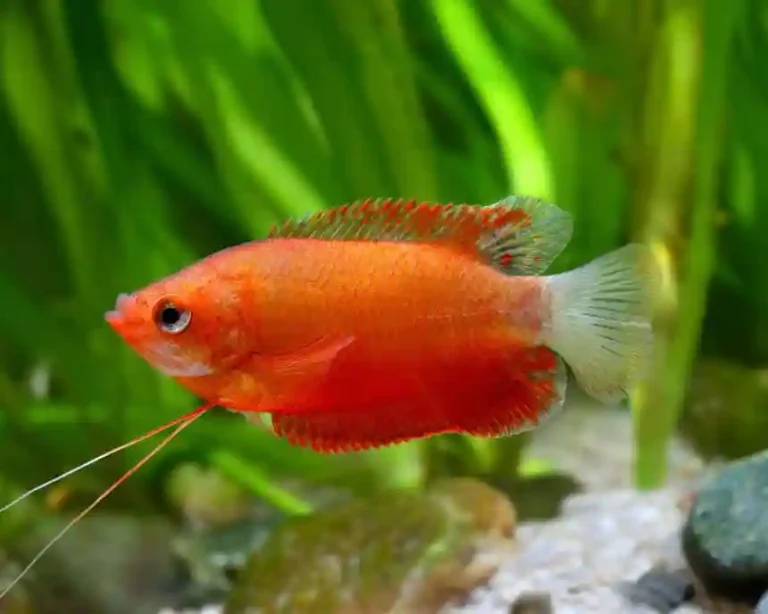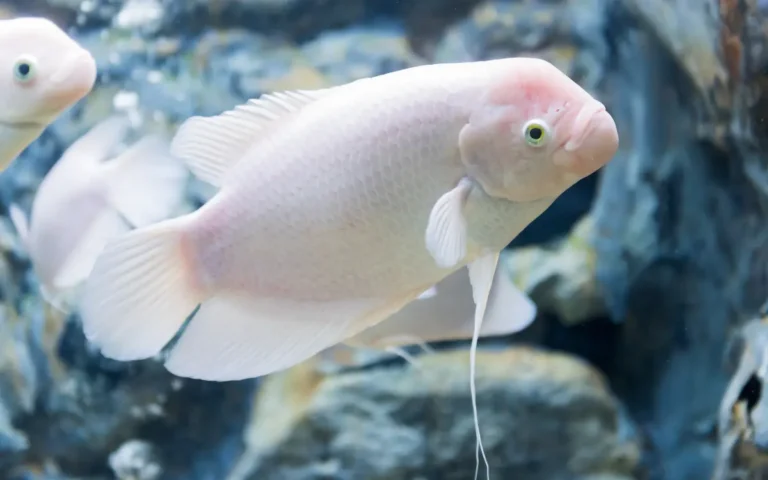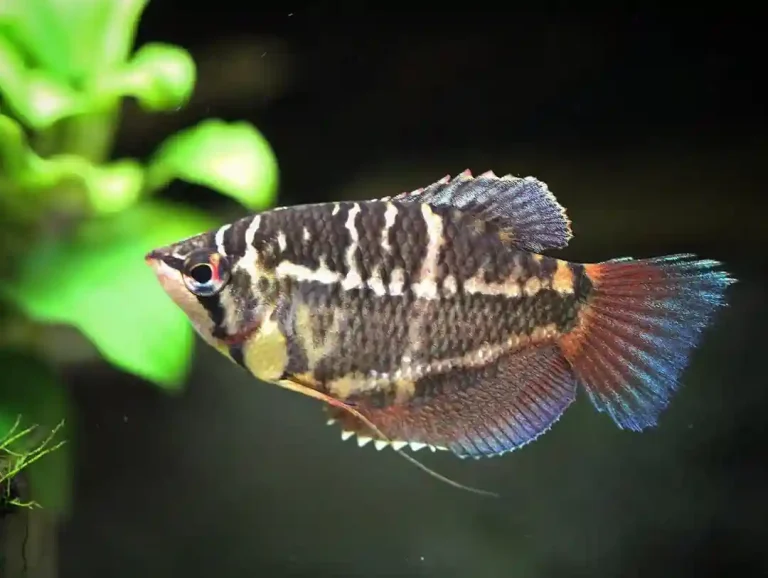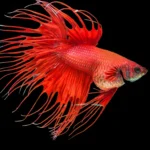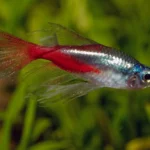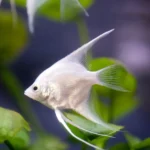Some fish have evolved unusually large eyes to survive in dark, murky, or deep-sea environments. These oversized eyes help them see better at night, detect predators, and hunt prey where light is limited. In this guide, you’ll meet 16 unique fish—some wild, some aquarium-safe—that rely on sharp vision for survival.
Why Do Some Fish Have Big Eyes? (Quick Summary)
Large eyes help fish:
- Collect more light in dim environments (deep sea, caves, night)
- Hunt at night or in cloudy water
- Spot predators before being attacked
- Enhance depth perception in fast-moving or open-ocean settings
Fish in low-light conditions like lanternfish, anglerfish, and squirrelfish rely heavily on these adaptations to thrive.
Deep Sea & Nocturnal Fish With Big Eyes
1. Bigeye Soldierfish (Myripristis spp.)
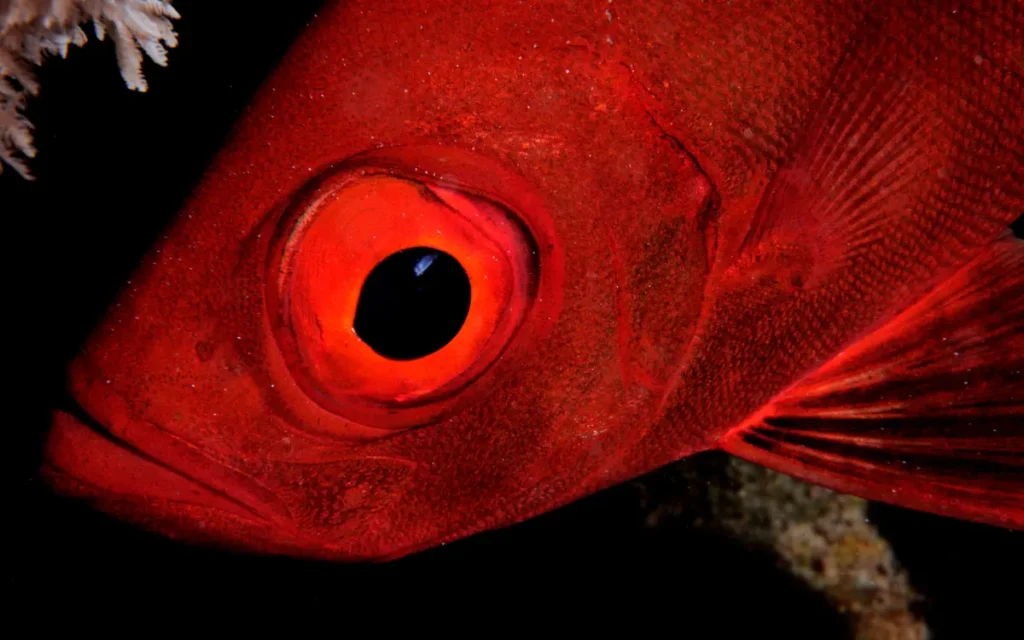
Habitat: Coral reefs
Size: Up to 8 inches
Behavior: Nocturnal, reef-hiding by day
Key Trait: Large reflective eyes for night hunting
The Bigeye Soldierfish uses its oversized, mirror-like eyes to see clearly in low-light reef environments. It hides in crevices by day and comes out at night to feed on plankton and small invertebrates. Its red coloration also helps it stay camouflaged in dim underwater settings.
2. Bigeye Trevally (Caranx sexfasciatus)

Habitat: Indo-Pacific reefs & open waters
Size: Up to 3 feet
Behavior: Schooling by day, hunting at night
Key Trait: Sharp low-light vision for tracking prey
The Bigeye Trevally hunts in open water, relying on its big eyes to detect small fish and crustaceans even when visibility drops. At night, the school breaks apart, and each fish hunts independently—making strong night vision a survival tool.
3. Bigeye Tuna (Thunnus obesus)
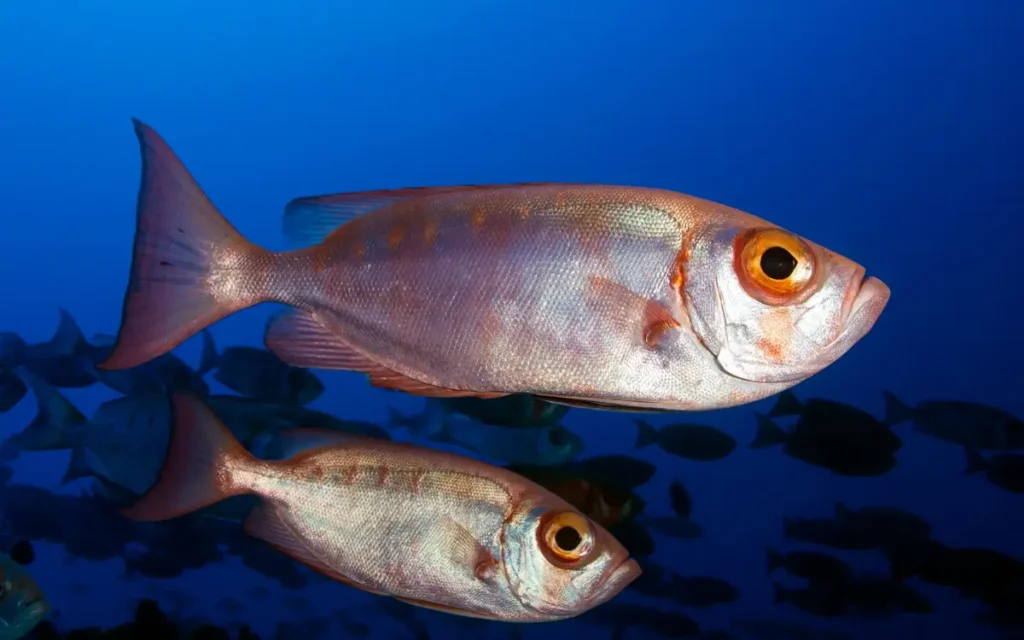
Habitat: Open ocean worldwide
Size: Up to 8 feet
Behavior: Migratory, deep-diving predator
Key Trait: Vision adapted to extreme depth changes
The Bigeye Tuna’s name says it all—its large eyes let it track squid and fish at great ocean depths, where light is scarce. As it dives from warm surface waters to deep cold layers, its eyes adjust quickly, helping it thrive across a wide range of oceanic conditions.
4. Black Moor Goldfish (Carassius auratus var.)
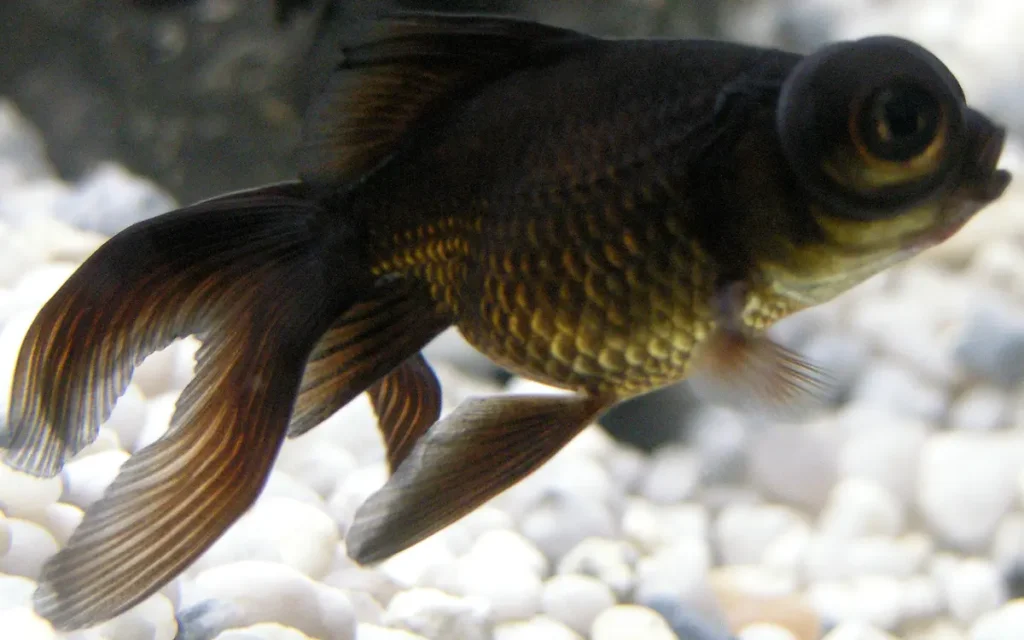
Habitat: Home aquariums
Size: 4–8 inches
Behavior: Peaceful, slow-moving
Key Trait: Protruding telescopic eyes
The Black Moor Goldfish is a popular aquarium variety known for its bulging, rounded eyes. While these eyes look oversized, they don’t enhance vision. In fact, they make the fish more prone to injury and limited sight. Owners should provide a low-obstacle environment to prevent damage and ensure smooth swimming.
Explore more peaceful aquarium fish in our Freshwater Fish Guide.
5. Blue Shark (Prionace glauca)
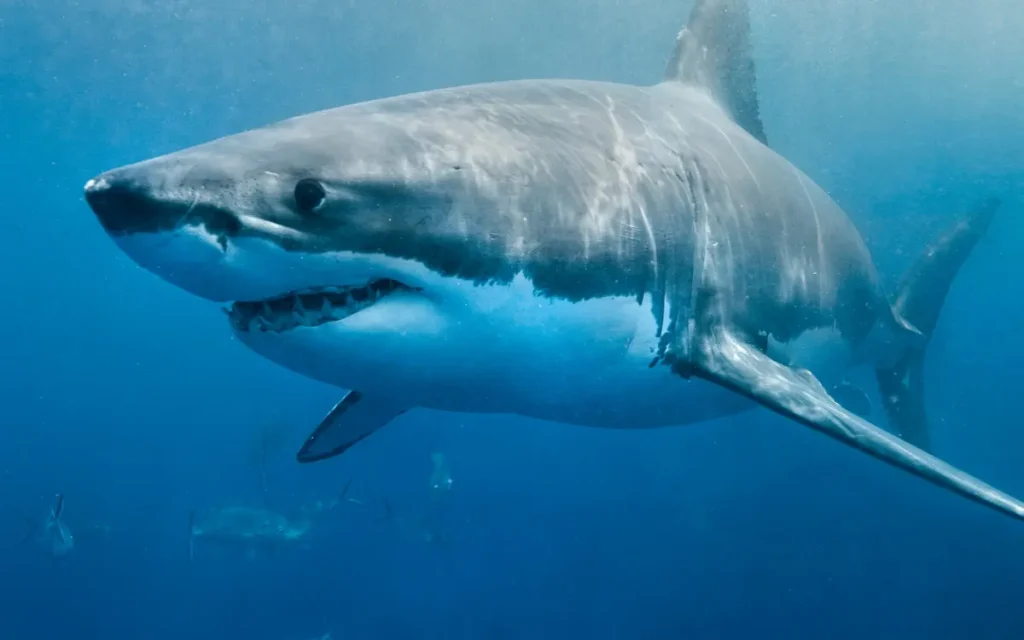
Habitat: Open ocean, temperate & tropical | Size: Up to 12 feet Behavior: Migratory, deep-diving predator Key Trait: Large, rounded eyes for low-light vision
Blue Sharks are sleek oceanic hunters with large, dark eyes that help them see in deep and dim waters. Their vision is especially important during long-distance dives where light is minimal. These sharp eyes allow them to detect squid, fish, and even threats at depths other sharks may avoid.
6. Brazilian Four-Eye (Anableps anableps)

Habitat: Brackish rivers of South America
Size: Up to 12 inches
Behavior: Surface-dweller, shoaling
Key Trait: Split pupils for dual vision
This unique fish has two pupils in each eye, enabling it to see both above and below the water’s surface at the same time. While not truly a “big-eyed” fish in size, its vision system is highly adapted for watching out for aerial predators while feeding underwater.
7. Bubble-Eye Goldfish (Carassius auratus var.)
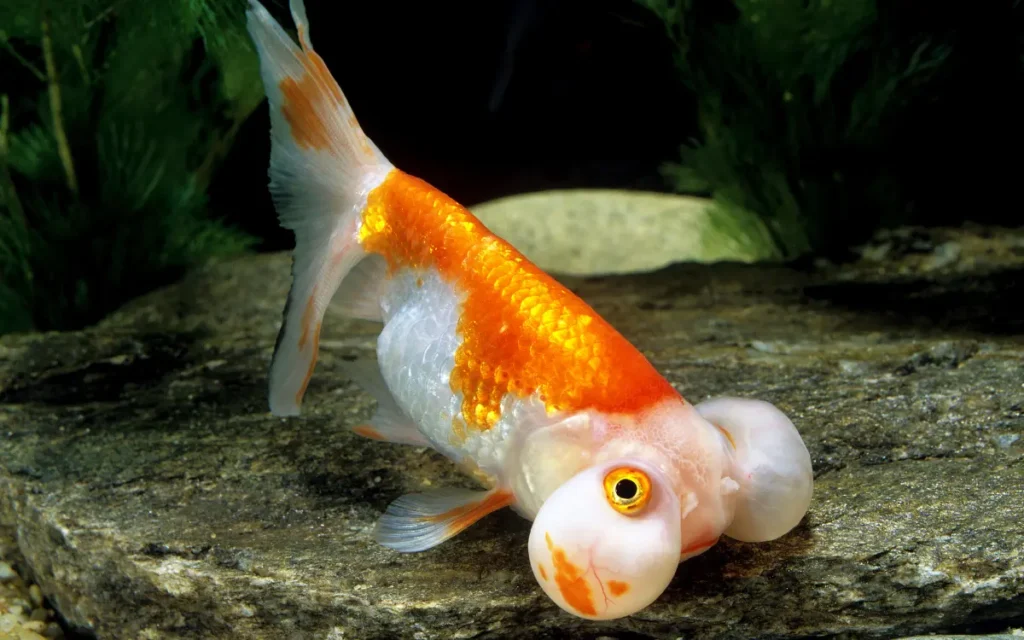
Habitat: Aquariums
Size: 4–6 inches
Behavior: Peaceful, delicate swimmer
Key Trait: Fluid-filled eye sacs
The Bubble-Eye Goldfish is a true oddity in the aquarium world. Its signature feature — inflated, fluid-filled sacs under its eyes — gives it a unique appearance, though not functional for better vision. Due to its fragile eyes and poor visibility, this goldfish needs calm tank mates and a safe, obstacle-free environment.
8. Giant Squid (Architeuthis spp.)
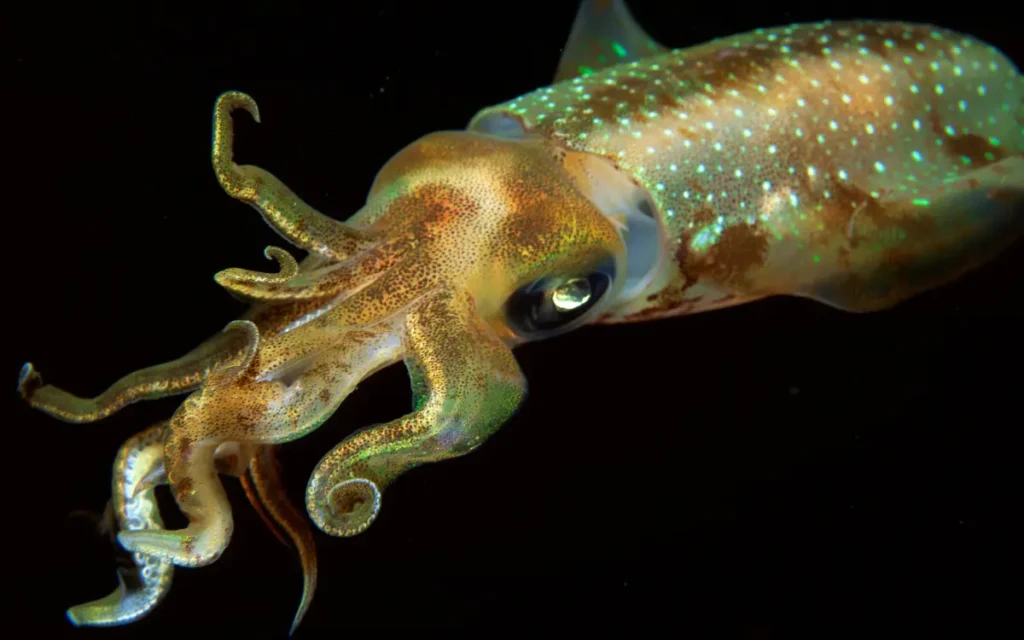
Habitat: Deep ocean (1,000–3,000+ ft)
Size: Up to 40+ feet
Behavior: Solitary, elusive
Key Trait: Largest eyes in the animal kingdom
The Giant Squid’s eyes can reach the size of dinner plates, making them the largest in the animal world. These massive organs are perfect for spotting the bioluminescent glow of predators, like sperm whales, and for navigating the dark, icy depths where sunlight never reaches.
9. Glassy Sweeper (Pempheris schomburgkii)

Habitat: Coral reefs, caves
Size: Up to 6 inches
Behavior: Nocturnal, schooling
Key Trait: Reflective eyes for low-light reef navigation
Found in shaded reef areas and caves, the Glassy Sweeper has large, reflective eyes that give it excellent vision in dimly lit environments. It hunts plankton at night and stays in tight schools for safety. Its big eyes help it react quickly to predators while navigating narrow reef spaces.
10. Hawaiian Lionfish (Dendrochirus barberi)
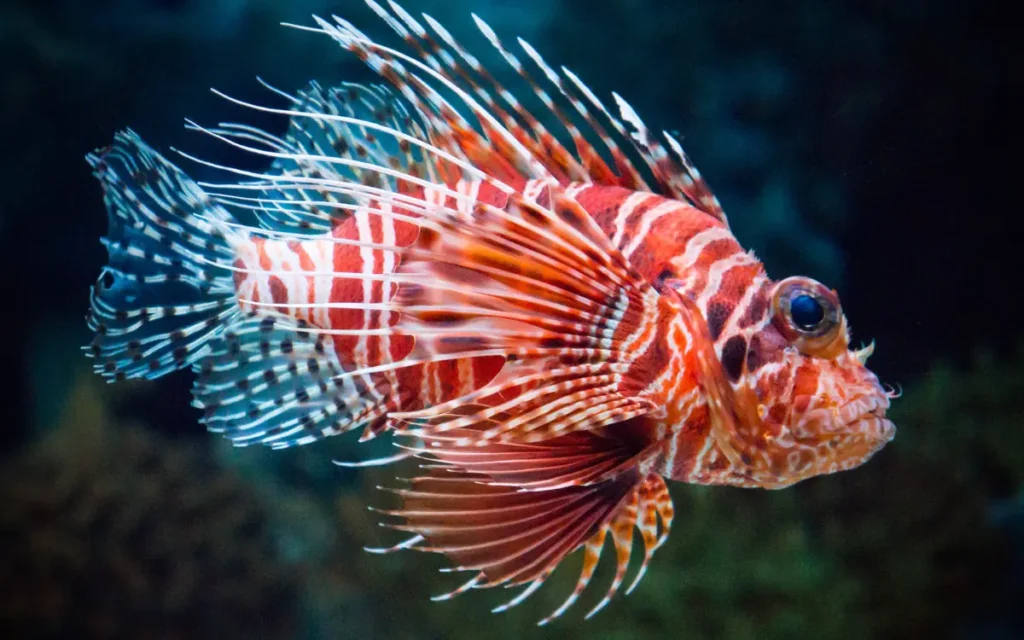
Habitat: Coral reefs (Hawaii)
Size: Up to 6 inches
Behavior: Nocturnal ambush predator
Key Trait: Big eyes for night hunting
This venomous reef fish relies on its oversized eyes to detect prey after dark. The Hawaiian Lionfish blends into reef crevices by day and emerges at night to ambush shrimp and small fish. Its sharp vision and venomous spines make it a fearsome yet beautiful reef hunter.
11. Jack-Fish (Crevalle Jack) (Caranx hippos)
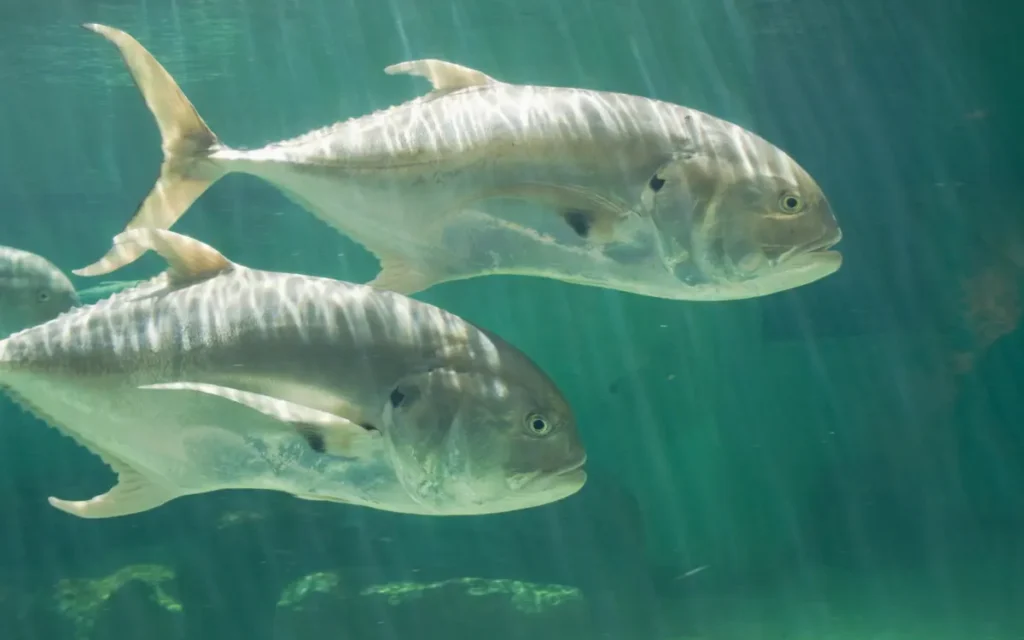
Habitat: Coastal waters, reefs
Size: Up to 4 feet
Behavior: Fast, powerful swimmer
Key Trait: Sharp eyes for tracking fast prey
The Jack-Fish has large, forward-facing eyes that help it chase down small fish and crustaceans in coastal waters. These eyes provide excellent depth perception and motion tracking—key advantages for a high-speed predator that relies on quick reflexes and sharp vision to strike with precision.
12. Lanternfish (Myctophidae family)
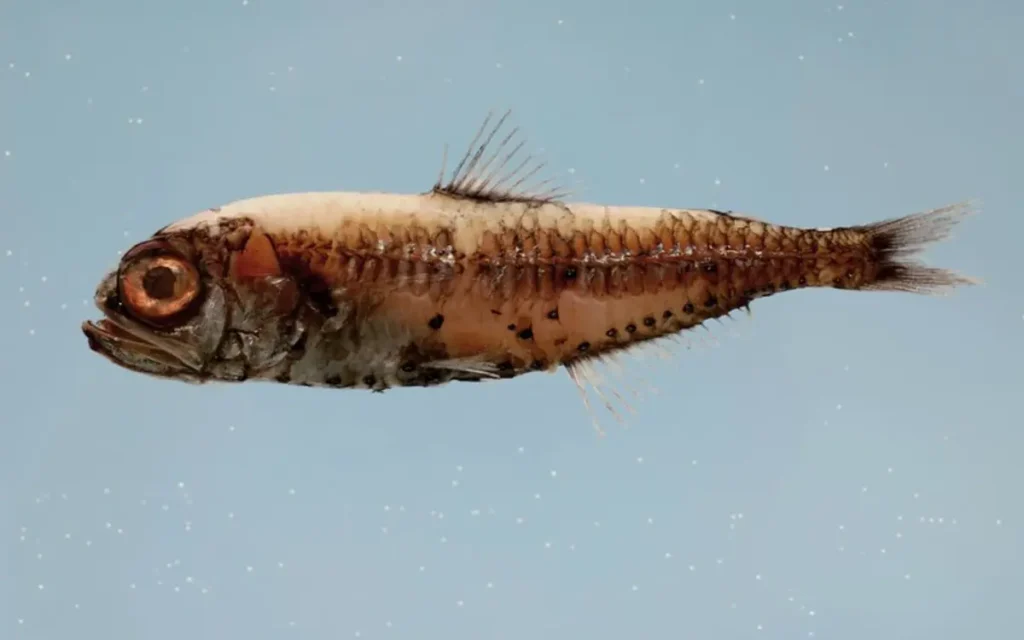
Habitat: Deep sea (300–3,000+ ft)
Size: 2–6 inches
Behavior: Vertical migrator, bioluminescent
Key Trait: Light-sensitive eyes for glowing prey detection
Lanternfish are deep-sea dwellers that use photophores (light-producing organs) to communicate and hide. Their large eyes detect the tiniest light signals, including bioluminescence from other sea creatures. Despite their size, they play a major role in ocean ecosystems and are a key food source for whales and sharks.
13. Pufferfish (Tetraodontidae family)

Habitat: Reefs, lagoons, estuaries
Size: 6–24 inches
Behavior: Defensive, slow swimmer
Key Trait: Wide peripheral vision
Pufferfish are known for their ability to inflate when threatened, but they also rely on their large, protruding eyes for survival. Their eye placement gives them excellent peripheral vision, helping them spot predators from multiple directions—critical in the visually complex reef environments they call home.
14. Rockfish (Sebastes spp.)
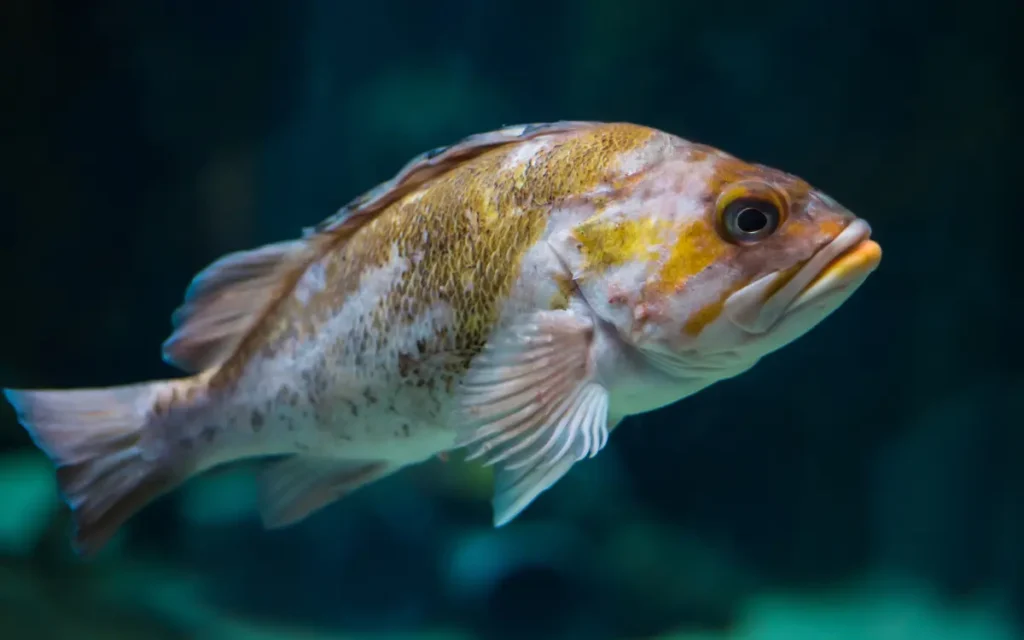
Habitat: Coastal Pacific, rocky reefs
Size: 6–36 inches
Behavior: Bottom-dweller, ambush predator
Key Trait: Excellent vision in shadows
Rockfish thrive in low-light, rocky crevices where they hide during the day and emerge to hunt at dusk. Their large, forward-facing eyes allow them to detect movement in dim conditions. Combined with their camouflage and patience, these eyes help them ambush small fish and invertebrates with ease.
15. Squirrelfish (Holocentridae family)

Habitat: Tropical reefs, crevices
Size: 6–12 inches
Behavior: Hides by day, active at night
Key Trait: Big eyes for night hunting
Squirrelfish are nocturnal reef dwellers with huge, light-sensitive eyes. They rely on these to navigate and hunt in complete darkness. During the day, they stay hidden in reef holes, and at night, they feed on plankton and crustaceans. Their red coloration and eyes are classic signs of a reef night hunter.
16. Stargazer (Uranoscopidae family)
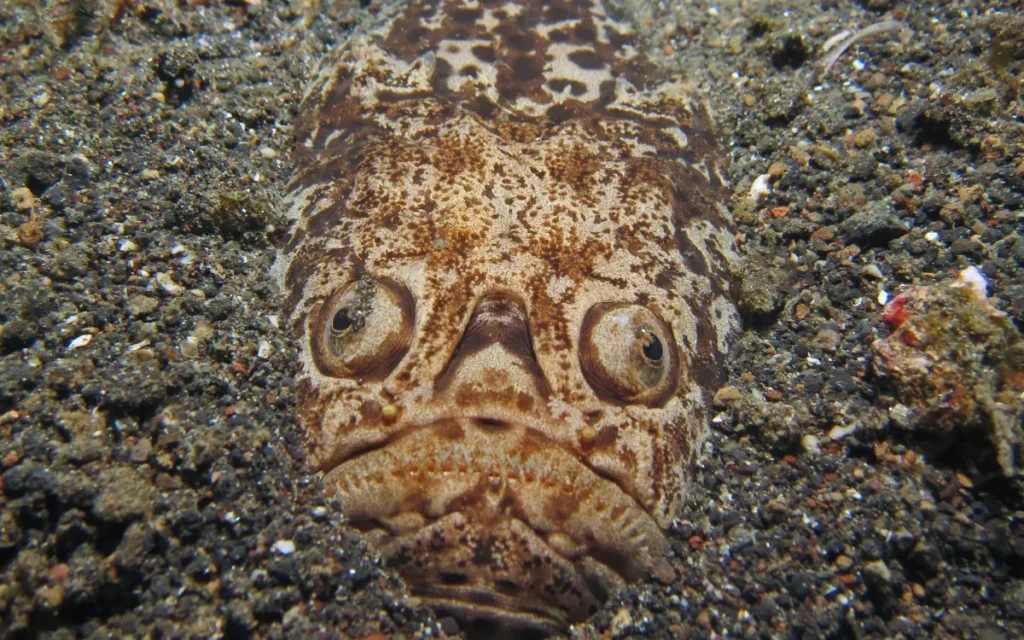
Habitat: Sandy ocean bottoms
Size: Up to 18 inches
Behavior: Bury-and-ambush predator
Key Trait: Eyes on top of head for upward vision
The Stargazer fish buries itself in the sand and waits for prey to pass overhead. Its upward-facing eyes are key to this ambush strategy. These large eyes stay visible above the sand, scanning for movement while the rest of the body remains completely hidden.
Read also:
FAQ’S
Why do some fish have big eyes?
Fish develop big eyes to see better in low-light environments such as the deep sea, murky rivers, or during nighttime. Larger eyes capture more light, improving their ability to hunt, navigate, and avoid predators in darkness.
Which fish has the biggest eyes in the world?
The Giant Squid has the largest eyes of any known animal. Its eyes can reach up to 10 inches (25 cm) across, helping it spot predators like sperm whales in deep, dark waters.
Are fish with big eyes better at seeing in the dark?
Yes. Most big-eyed fish—like lanternfish, squirrelfish, and dragonfish—have evolved to detect faint light or bioluminescence in pitch-black environments.
Can I keep a fish with big eyes in an aquarium?
Yes. Some fish with large eyes, like Black Moor Goldfish, Bubble-Eye Goldfish, and Brazilian Four-Eyes, are suitable for home aquariums. However, they often require gentle care and obstacle-free environments to protect their delicate vision.
Do big eyes mean better vision in fish?
Not always. While large eyes help with light sensitivity, some species (like Bubble-Eye Goldfish) have poor vision and rely more on smell and memory than sight.

